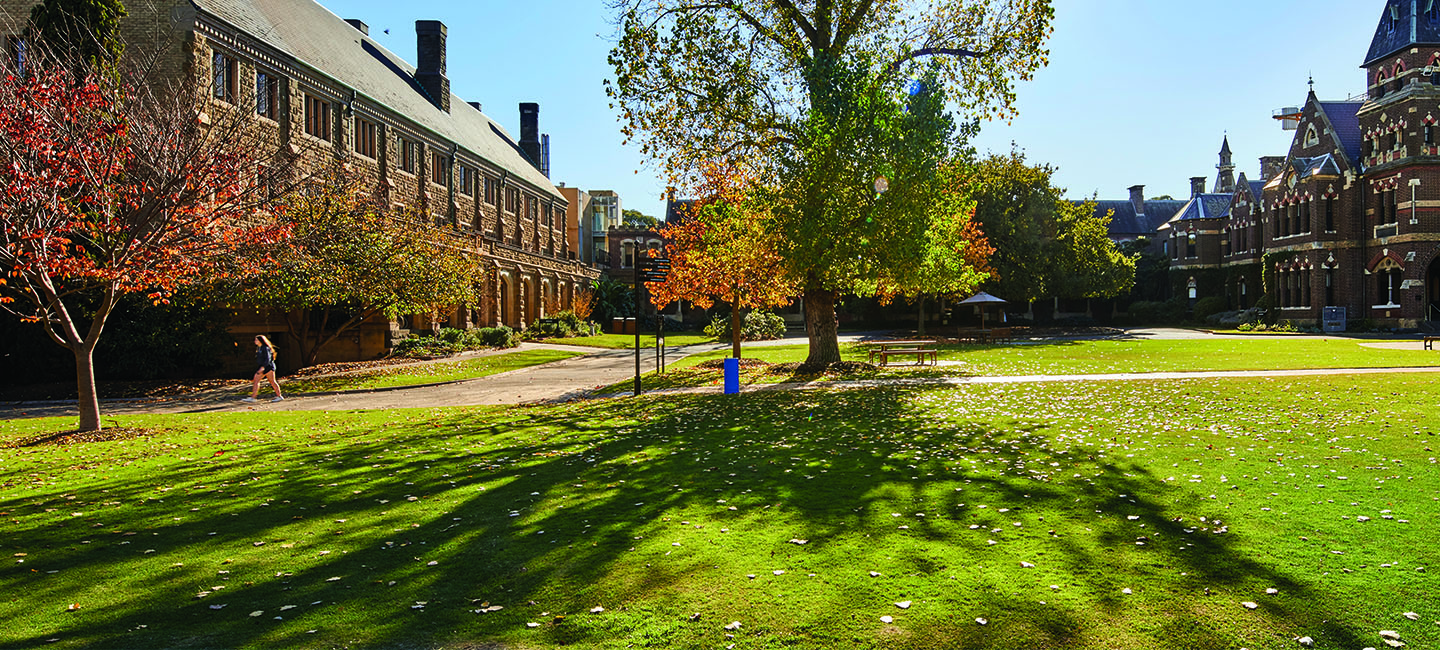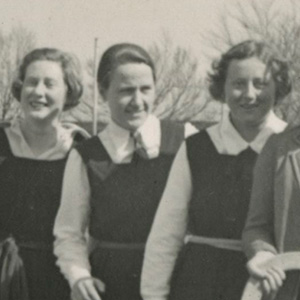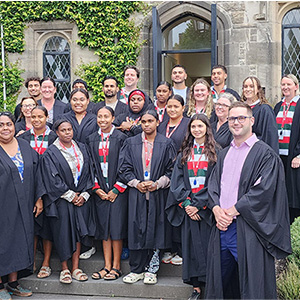

New sculpture in Summerhouse gardens
At the Dean’s Dinner on Friday 17 April, the College unveiled the latest acquisition to its art collections.
The College Board annually makes an allocation towards the purchase of new works of art to augment our existing collections.
This ensures that the College offers a rich and stimulating cultural environment.
It forms a central aspect of Trinity's outlook, reflected in our current fundraising towards the Cultural Precinct within the new Gateway building, including an art gallery and collection storage space, due to be completed next year.
In 2014, an opportunity arose to look beyond our walls and commission a work of sculpture to be installed in the gardens off the Summerhouse lawn that have been landscaped in recent years.
The work sits in close proximity to two existing sculptural works: the 1994 purchase by the student ER White Society of David Hamilton’s ‘The Brush’, and the long-term loan of British sculptor David Abecassis’s untitled work in cold-forged bronze and stainless steel.
About the new acquisition
Rudi Jass is renowned for his mesmerising kinetic sculptures, and has numerous accolades to his credit. In 2006, he won the Dame Elisabeth Sculpture Award, and followed it two years later as the inaugural acquisitive prize of the Toorak Village Sculpture Exhibition.
He won the 2010 ‘Sculpture in the Vineyards’, an annual exhibition of large-scale public sculptural work in the Hunter Valley, and was commissioned in 2011 to produce a work for inclusion in the renowned Chelsea Flower Show, England.
‘Ventulus’, Latin for ‘gentle breeze’, is a work commissioned specifically for Trinity College. In developing a design, Jass has drawn upon the symbol of the trefoil, a feature that appear across some of the College’s earliest buildings.
The column of rusticated Corten steel takes its profile from this motif that represents the Holy Trinity, with the same emblem laser-cut at the column’s upper edge.
Spiralling outwards, bright, stainless steel branches terminating in broad gingko leaves move effortlessly in the breeze.
The work mirrors the gentle movement of the native grasses and salvia already present in the Summerhouse gardens.
It is a work that can be admired for its simply elegance, or read at a deeper level. The column, with its strong references to a symbol of the College’s Anglican heritage, provides both a physical and metaphoric foundation.
Its aged appearance hints at Trinity’s status as the oldest of the University of Melbourne's residential colleges. Upon this solid foundation, the clean lines of its winding branches unfurl against the open expanse of sky beyond the College’s eastern fence.
It is hoped that our students will see in this an analogy of their own Trinity experience, building upon a strong foundation to seize the myriad of opportunities that will unfold beyond their time at College.
The leaves of the gingko tree, a species common to Asia, represent longevity as well as reflecting Trinity's engagement with this region – both through our Foundation Studies program and increasingly for our residential students who may find themselves working in the region in years ahead. Small, mirror-polished gingko leaves framed through the trefoil aperture at the column’s top catch the reflection of the viewer. In this way, the viewer becomes an active participant in the work as well as being placed within the overall story that the work seeks to narrate.
‘Ventulus’ is a wonderful addition to the College’s art collections, and one that we’re sure will speak to many in our community.

.jpg?width=300&height=300&ext=.jpg)

